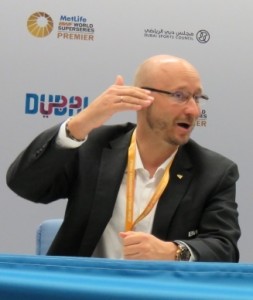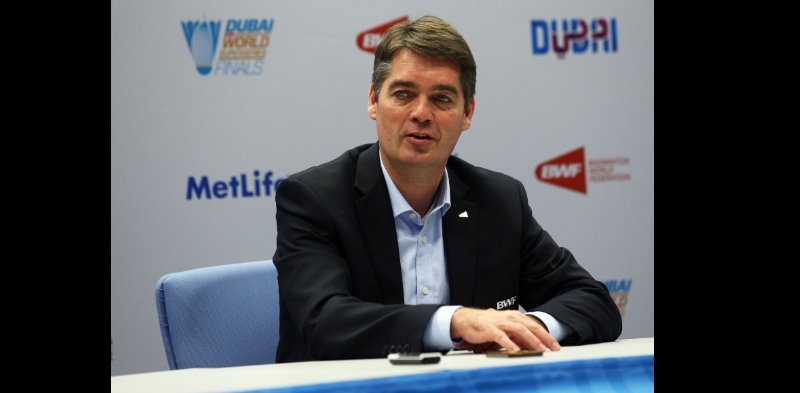BWF President Poul-Erik Høyer complimented the efforts of the organisation’s partners in popularising the sport in Dubai.
Speaking to media on the sidelines of the Dubai World Superseries Finals at Hamdan Sports Complex, Høyer (featured image) said Dubai Sports Council and Falcon and Associates had helped deliver a high quality event, besides working on the growth of badminton at the grassroots level.
 “Thanks to Dubai Sports Council and Falcon, we have the resources to showcase badminton at the highest level,” said Høyer.
“Thanks to Dubai Sports Council and Falcon, we have the resources to showcase badminton at the highest level,” said Høyer.
“We have seen some great quality of matches. The spectator response has grown since last year. It won’t stop here. Badminton in the Gulf is also about having a potential area, with links to Europe and (the rest of) Asia.”
Høyer was thrilled with the growth of the sport in the UAE, crediting BWF’s Shuttle Time programme for popularising it among school children.
“We’re gaining ground as Shuttle Time is going to schools and there’s a lot of activity,” said Høyer. “More than thousand young players are playing badminton regularly, including a lot of UAE citizens. We’re developing the community of badminton players. The vision is to have every child play badminton.”
Fielding questions from the media on the potential of the Gulf region, Høyer brought up the example of Spain and the Pan Am region.
“One of the countries that excites me is Spain: it is a less-developed badminton country, but has produced the best Women’s Singles player of today. That has come from a ten-year strategy. This is something for other countries to duplicate. There’s huge development in the Pan Am area. Five or six years ago they had seven tournaments; now they have 36 tournaments. We are able to generate more tournaments, and that is providing a platform for players to reach higher levels.”
On the question of packaging a badminton event as entertainment for spectators, Høyer said BWF has been working on, among other initiatives, interactive features with spectators.
“We want to communicate more with our audience,” Høyer said. “Displaying elements like smash speeds helps us package the sport better. We’d like to say we’re the fastest racket sport in the world. We should create interest by telling what’s going on on the court and try to be interactive with the audience.”
BWF Secretary General Thomas Lund referred to the rise of smaller Asian countries in badminton as an exciting development.
“There’re more Asian countries in the top. The game is spreading, there are more players fighting for the titles. China are still the best, but they’re having to fight hard. That’s a positive thing for badminton.”































